Shiitake Mushroom Soap Recipe
This natural mushroom soap recipe features an infusion of shiitake mushrooms, which are high in antioxidants and anti-irritant compounds that may help soothe reddened or sensitive skin.
Mushroom extracts are popular in skincare for their many benefits, and today we’re going to use the same idea in soap!
People always ask me if the benefits of an herb, flower, or in this case – mushroom, makes it through the soapmaking process. I always refer them to this “Ask the Experts” article, which mentions that indeed, many beneficial compounds are resistant to heat and alkalinity. Of course, we can’t know for sure how many, if any, survive without scientific testing, but at the very least, mushrooms are a fun addition to soap and add label appeal!
There’s also this study you may find interesting, about a man who used a mushroom soap made with goat milk and reishi, and it dramatically improved a chronic skin condition he had.
To Make the Tea:
To make this soap, you’ll first need to make a mushroom tea.
Place 1 cup of freshly chopped shiitake mushrooms in a heatproof container, then pour 1 1/2 cups of simmering hot water over them. Steep for one hour, strain, then place in the refrigerator until completely chilled.
Before making the soap, weigh out 9.25 oz (262 grams) of mushroom tea to make the lye solution.
To Make the Soap:
If you’ve never made soap before, stop and study the craft first. Check out my article Soapmaking 101 for a good starting point. Always wear gloves and goggles, and weigh out ingredients using an accurate scale. (Don’t use measuring cups to make soap.)
Here is a List of Equipment Needed to Make Soap at Home.
Most of the Soap Molds I use on this site and in my books are linked to in:
- 15+ Pretty Silicone Molds for Making Handmade Cold Process Soap
- or 15+ Soap Molds for Melt & Pour Soap (most can be used for cold process too)
Ingredients Needed
Lye Solution
- 9.25 oz (262 g) cold shiitake mushroom tea
- 3.79 oz (107 g) sodium hydroxide (lye) (6% superfat)
Oils & Butters
- 10.5 oz (298 g) olive oil (37%)
- 5.5 oz (156 g) coconut oil* (20%)
- 3 oz (85 g) mango butter (11%)
- 3 oz (85 g) shea butter (11%)
- 3 oz (85 g) sweet almond oil (11%)
- 1.5 oz (43 g) castor oil (5%)
- 1.5 oz (43 g) kukui nut or sunflower oil (5%)
* If you’re allergic to coconut oil, try using babassu oil instead, and slightly adjust the lye amount to 3.75 oz (106 g).
This recipe can also be found in my Natural Facial Soaps eBook – available separately in my eBook shop, or as part of my popular Handmade Natural Soaps eBook collection!
How to Make
- Be sure you have on proper safety gear of gloves and goggles and are familiar with the soapmaking process.
- Weigh the cold mushroom tea into a stainless steel or heavy duty plastic container.
- Weigh the lye into a small cup.
- Sprinkle the lye into the liquid and stir until dissolved. (Don’t breathe in the temporary, but strong fumes.)
- Cool the lye solution in a safe spot for 30 – 40 minutes, or until about 100 to 115 degrees F.
- While the lye solution cools, melt the shea and mango butters (I heat them in a small saucepan over medium-low heat), then add the coconut oil to the hot butters to melt it as well.
- Stir the melted butters/coconut oil into the olive, sweet almond, castor, and kukui (or sunflower) oil.
- Pour the cooled lye solution into the warm oils. (Temperature precision isn’t critical, but try to aim for the oils to be between 100 to 120 degrees F. Temperatures that are too low could lead to stearic acid spots.)
- Start by hand stirring the soap.
- Next, use brief short pulses of the immersion blender, interspersed with hand stirring, until soap reaches light trace. (Don’t run the stick blender continuously.)
- I keep this recipe unscented, but if you want to add essential oil, do so at this step and stir until blended.
- Pour soap into molds.
- Let sit for about 15 minutes, then cover lightly with a sheet of wax paper sprayed with baking spray, or a piece of parchment paper. (Not overfilling + waiting + spray/parchment helps keep the soap from sticking to the covering.)
- Uncover after 24 hours.
- Keep the soaps in their mold for 1 to 2 days or until easy to remove.
- Cure the soaps on sheets of wax paper in the open air, turning occasionally, for at least 4 to 6 weeks before using.
Recipe notes:
I leave this soap unscented, but if you’d like to add one or more essential oils, visit EO Calc to determine the correct amount.
While you could hot process this soap instead of cold process, it will still need several weeks of cure time. For more on the importance of curing soap, please read this excellent article: “Curing Soap”.
If you run into trouble when making your soap, check out my extensive article, What’s Wrong With My Soap? {troubleshooting cold process soap problems}.
Sources & References:
Ask the Experts – Saponification. Retrieved online 2021, Nov. https://web.archive.org/web/20170617040005/http://personalcaretruth.com/2011/09/ask-the-experts-saponification
Bowe, Whitney P. Cosmetic Benefits of Natural Ingredients: Mushrooms, Feverfew, Tea, and Wheat Complex. Journal of Drugs in Dermatology; 2013;12(suppl 9):s133-s136.
Kurtipek, Gulcan Saylam, et al. Resolution of Cutaneous Sarcoidosis Following Topical Application of Ganoderma lucidum (Reishi Mushroom). Dermatology & Therapy; 2016 Mar; 6(1): 105–109.
Taofiq, Oludemi, et al. Development of Mushroom-Based Cosmeceutical Formulations with Anti-Inflammatory, Anti-Tyrosinase, Antioxidant, and Antibacterial Properties. Molecules. 2016 Oct; 21(10): 1372.

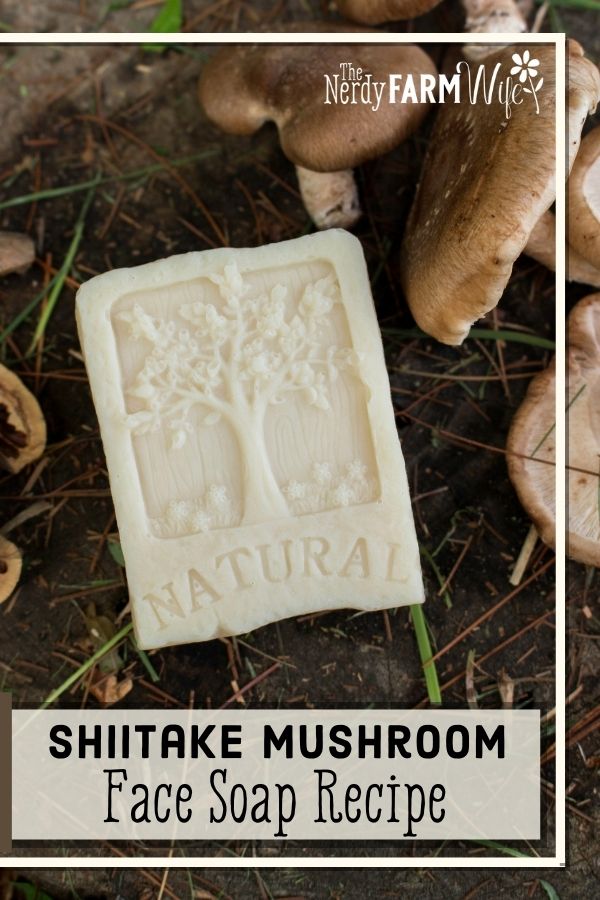
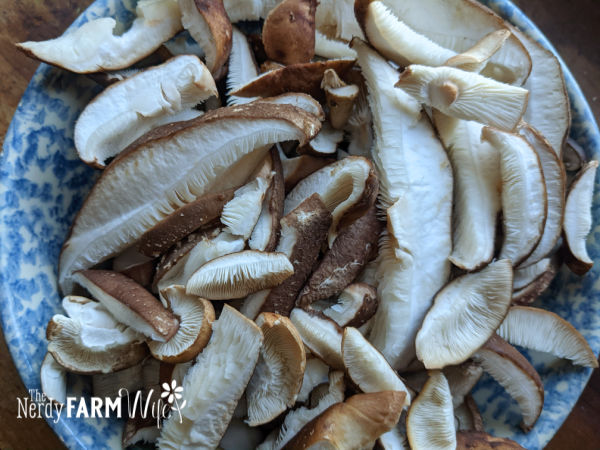
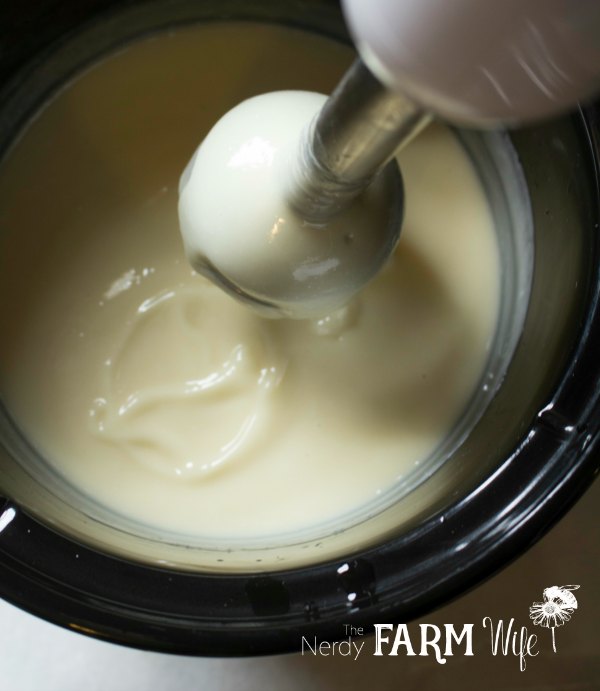
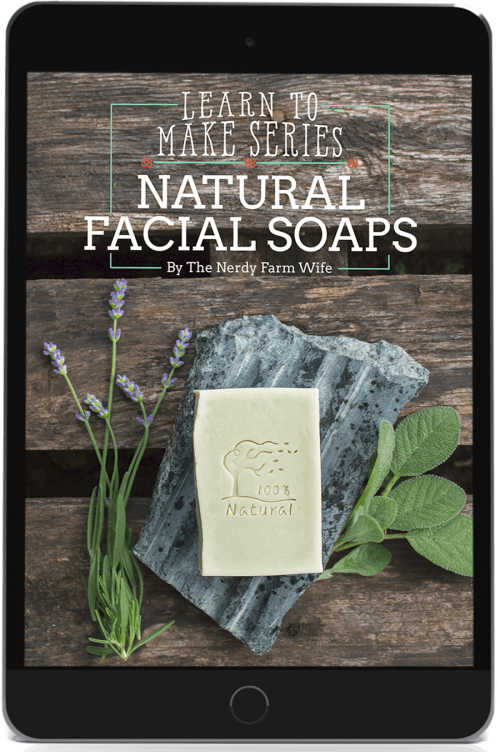
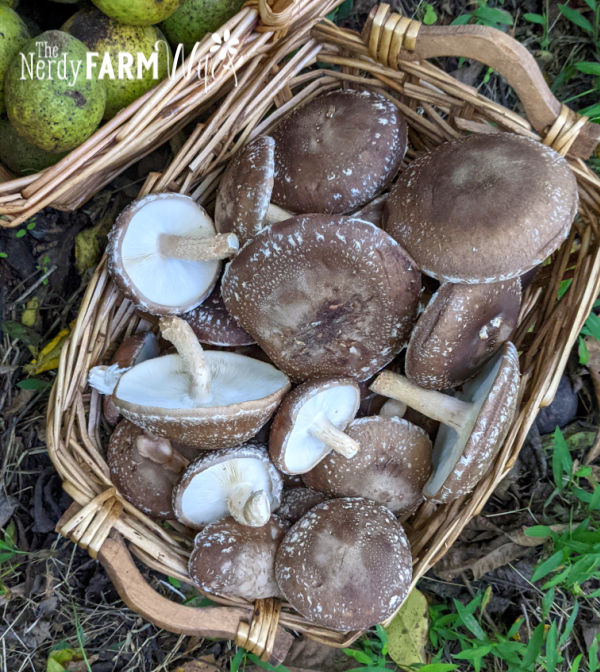
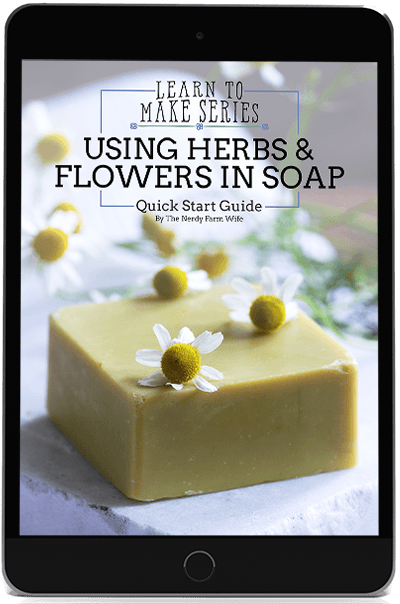

do you happen to have a mushroom soap recipe using melt and pour? thanks
Hi Kathy, That’s a great question! I haven’t tried it yet, but I think you could try dried mushroom pieces (or powder) similar to infusing something like dried calendula, etc into melt and pour soap base.
Then strain, pour, and it would just be a matter of observing it for some time to make sure the color stays nice and the soap stays fresh.
If you try it first, let us know how it goes, and I’ll put it on my to-do list to test out too! :)